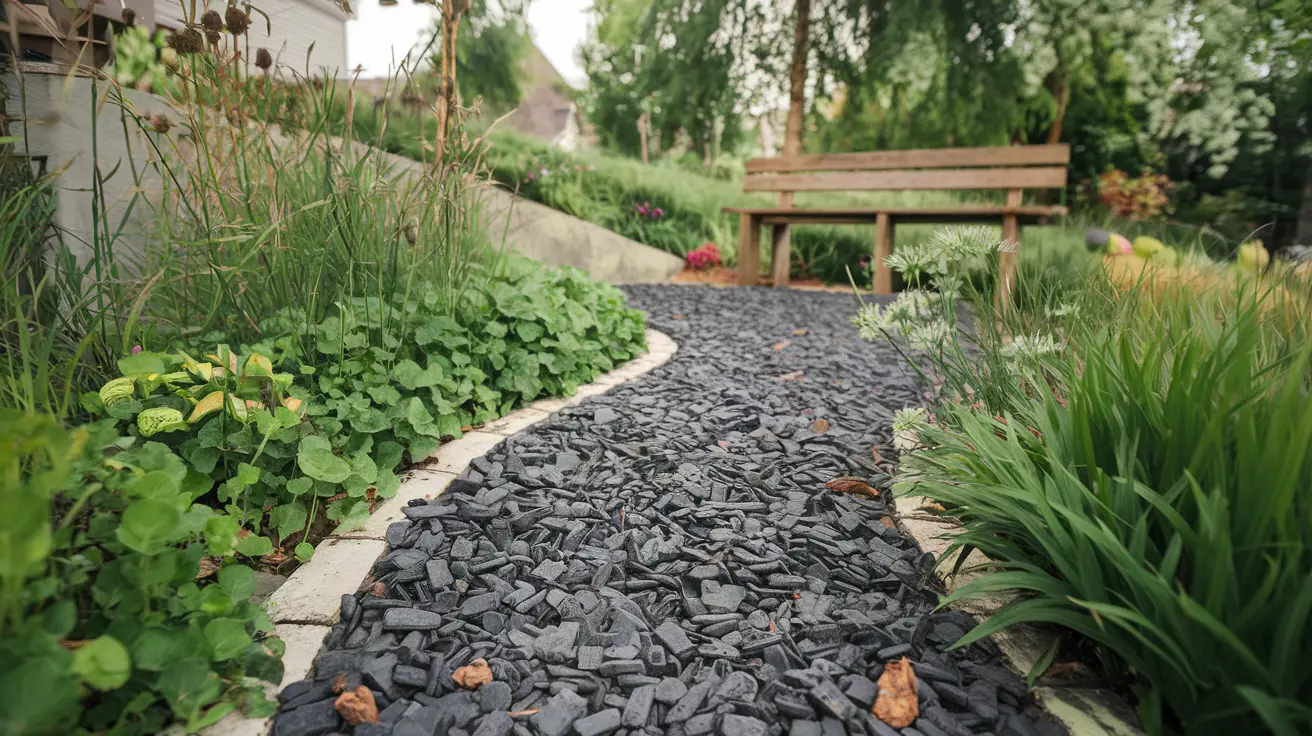
You know that awkward strip of land between your house and the fence? The one that’s currently home to a few weeds, a forgotten hose, and maybe a rogue soccer ball? Yeah, that side yard. It’s easy to overlook, but with a bit of creativity and some budget-friendly ideas, you can transform it into a charming garden walkway that adds both beauty and function to your outdoor space.
I remember standing in my own side yard, wondering what to do with the narrow, muddy path that led from the front yard to the backyard. Hiring a landscaper was out of the question, and I didn’t have a lot of money to spend. But I was determined to make it work. With some research, a few trips to the local hardware store, and a lot of elbow grease, I managed to create a walkway that not only looked great but also made the space more usable.
If you’re in a similar situation, don’t worry. You don’t need a big budget or professional help to create a beautiful side yard walkway. Here are 10 ideas that are both affordable and achievable, even for the most novice DIYer.
1. Gravel Path with Wooden Edging
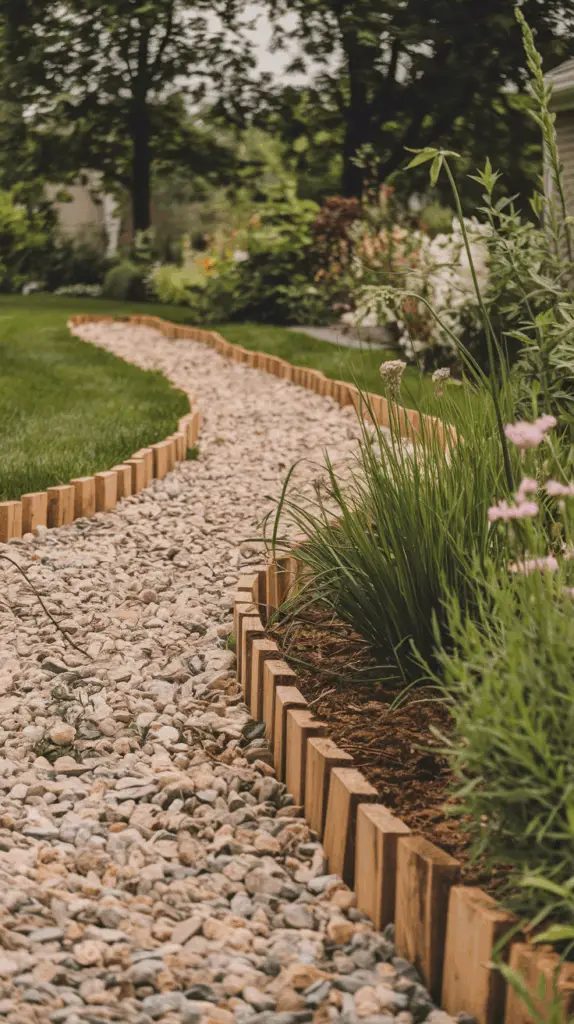
Gravel is one of the most cost-effective materials you can use for a walkway. It’s easy to install, requires minimal maintenance, and provides excellent drainage. To keep the gravel contained and give the path a polished look, use wooden edging. You can repurpose old lumber or purchase inexpensive landscape timbers.
Lay down landscape fabric to prevent weeds, add a layer of gravel, and secure the edges with the wood. This simple solution can transform your side yard into a neat and tidy passageway.
2. Stepping Stones Through a Rock Garden
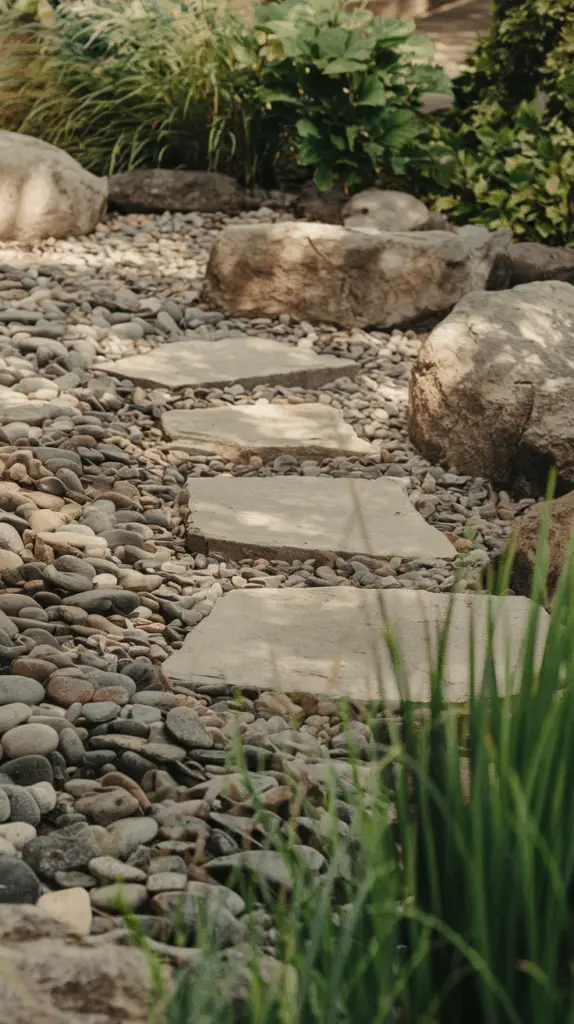
If you prefer a more natural look, consider placing stepping stones through a rock garden. Use a mix of river rocks, pebbles, and larger stones to create an organic feel. The stepping stones can be spaced out to reduce the number needed, saving money.
This design not only looks beautiful but also allows for water to drain easily, making it ideal for areas that tend to get muddy.
3. Mulch Path with Paver Accents
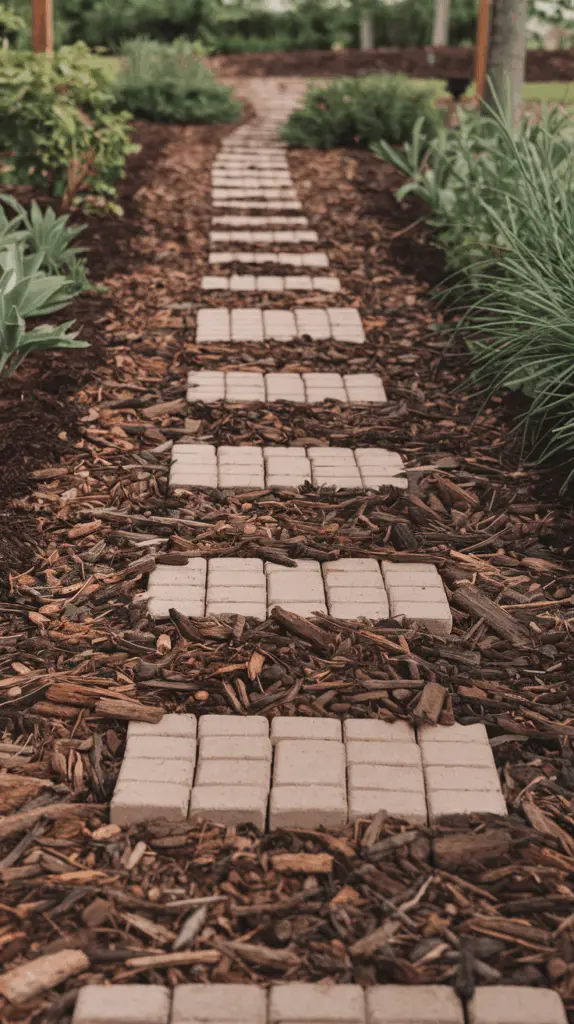
Mulch is another affordable material that can be used for walkways. It’s soft underfoot and blends well with garden landscapes. To add interest and durability, incorporate paver stones at regular intervals. This combination provides a stable walking surface while keeping costs low.
Plus, mulch helps suppress weeds and retains moisture for nearby plants.
4. Brick Walkway with Ground Cover
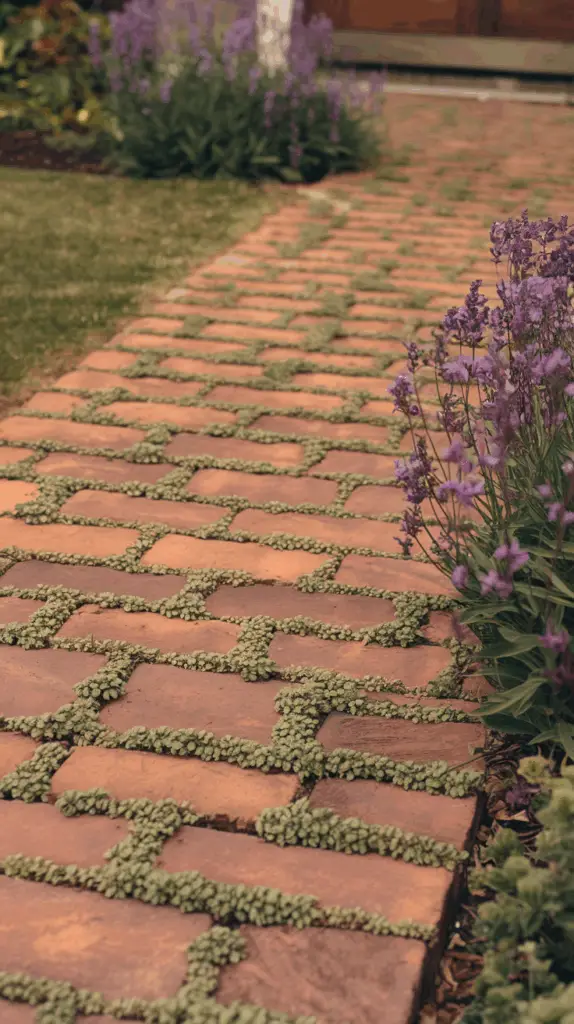
Reclaimed bricks can often be found at salvage yards or through online marketplaces at a fraction of the cost of new ones. Lay them in a simple pattern, such as a running bond or herringbone, and plant low-growing ground cover like creeping thyme or moss between the gaps.
This approach creates a charming, old-world feel and allows for some greenery to soften the hardscape.
5. Concrete Pavers with Gravel Fill
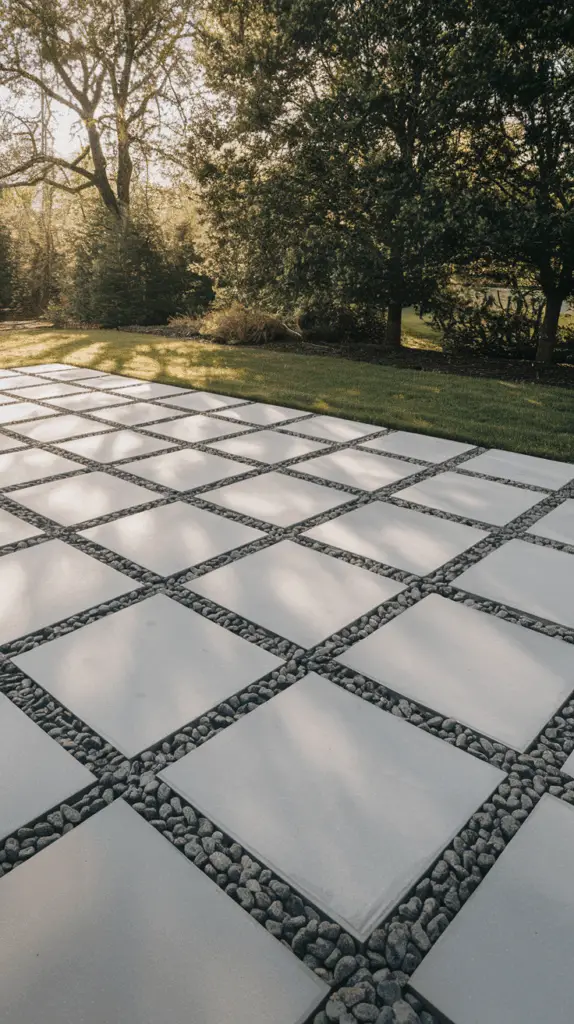
Concrete pavers are durable and come in various shapes and sizes. By spacing them out and filling the gaps with gravel, you can reduce the number of pavers needed, cutting costs.
This design is modern and clean, and the gravel provides excellent drainage. It’s a practical solution for high-traffic areas and can be customized to fit the dimensions of your side yard.
6. Wooden Pallet Walkway
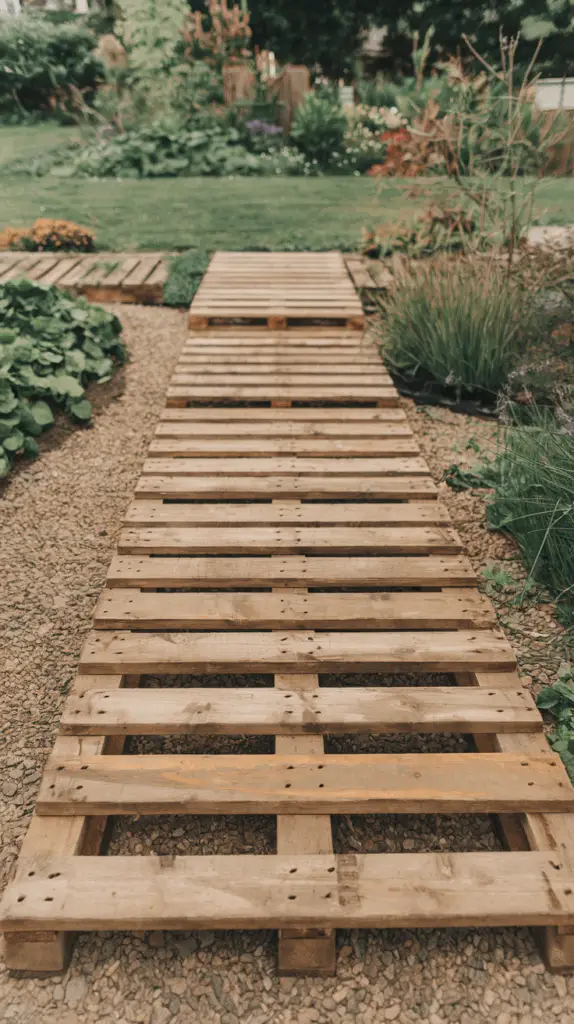
Wooden pallets are often available for free or at a low cost from local businesses. Disassemble the pallets and use the planks to create a rustic walkway. Lay them directly on the ground or on a bed of gravel for better drainage. Treat the wood with a weather-resistant sealant to extend its lifespan.
This DIY project is not only budget-friendly but also environmentally conscious.
7. Flagstone Path with Mulch Borders
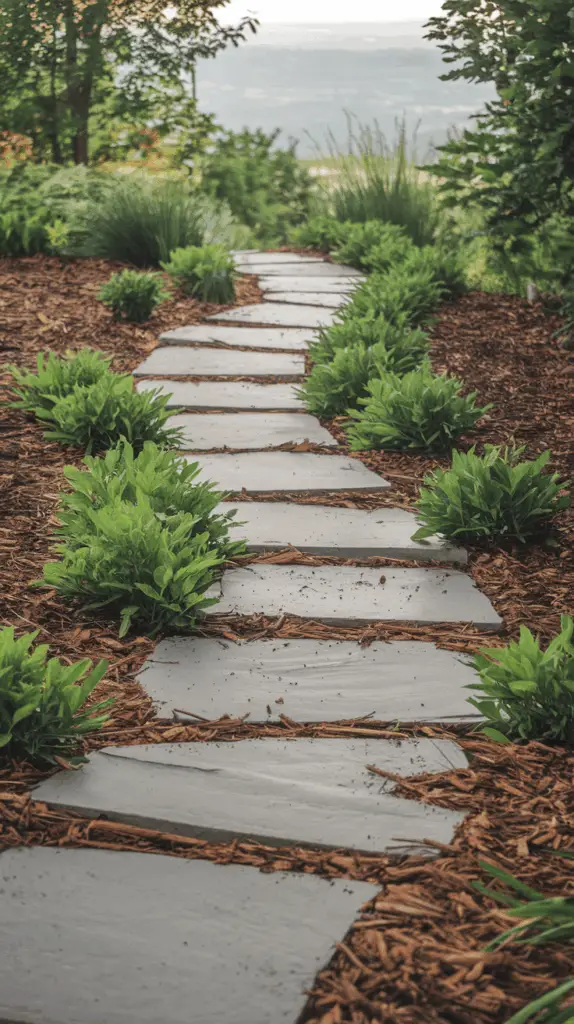
Flagstone offers a natural, organic look that blends seamlessly with garden landscapes. While it can be more expensive than other materials, you can save money by using irregular pieces and spacing them out. Surround the stones with mulch to create a cohesive path that’s both attractive and functional.
This combination provides a stable walking surface and helps define the walkway.
8. Crushed Shell Pathway
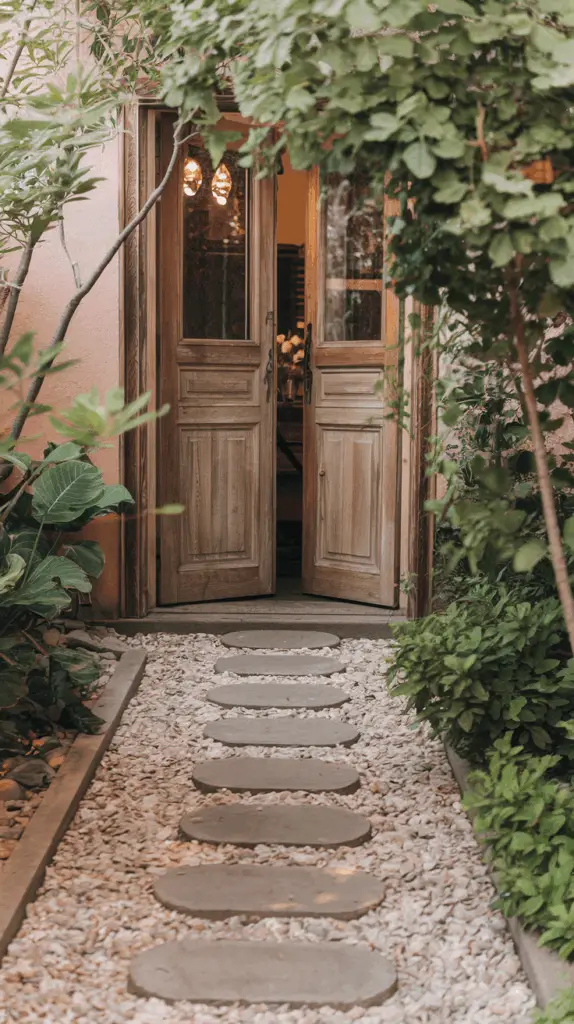
If you live near the coast, crushed shells can be an affordable and unique material for a walkway. They compact over time to form a solid surface and add a beachy vibe to your garden. Lay down landscape fabric to prevent weeds, add a layer of crushed shells, and edge the path with wood or stone to keep the shells contained.
This option is particularly suitable for sandy soils and coastal climates.
9. Recycled Rubber Mulch Path
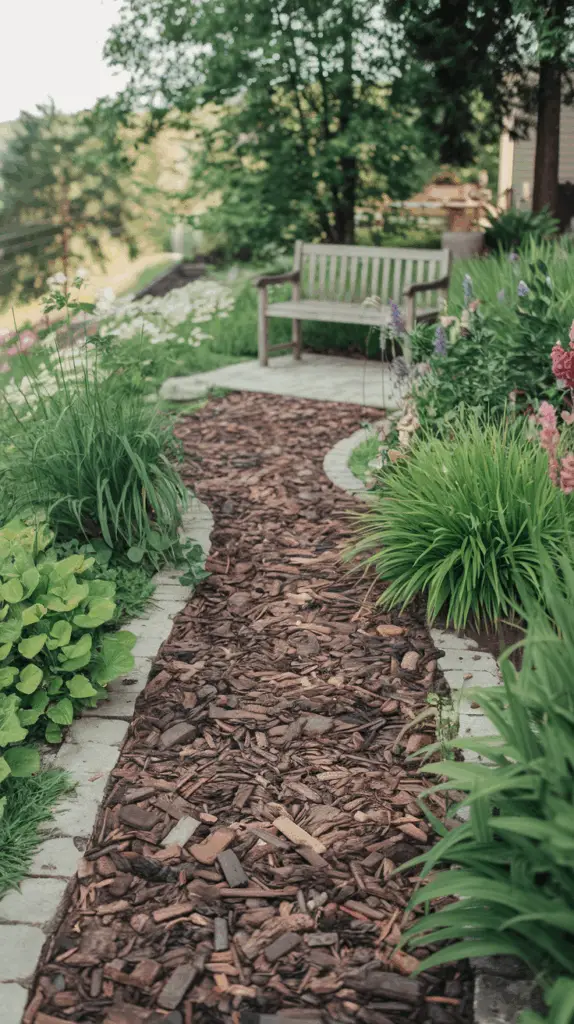
Recycled rubber mulch is made from shredded tires and is available in various colors. It’s durable, low-maintenance, and provides a soft walking surface. While it can be more expensive upfront, its longevity and minimal upkeep can make it cost-effective in the long run.
Use it to create a path that’s both functional and eco-friendly.
10. Living Walkway with Stepping Stones
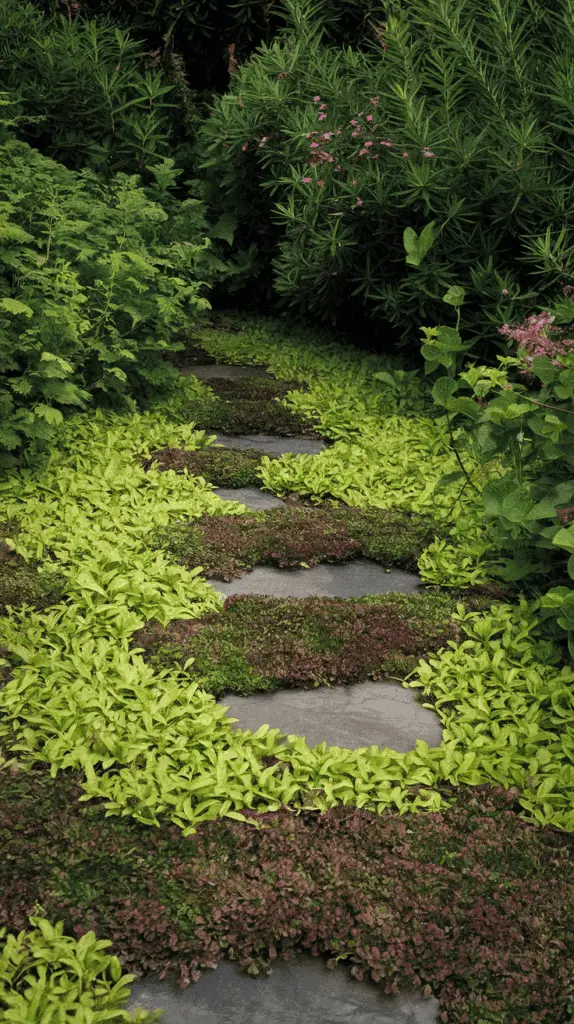
For a lush, green look, create a living walkway by placing stepping stones through a bed of ground cover plants. Choose hardy, low-growing varieties like creeping Jenny or Irish moss that can tolerate foot traffic. This design adds a natural element to your side yard and helps integrate the walkway into the surrounding landscape.
It requires more maintenance to keep the plants healthy but offers a unique and inviting path.
Final Thoughts
Transforming your side yard into a beautiful and functional walkway doesn’t have to be expensive or complicated. With a bit of creativity and some elbow grease, you can create a path that enhances your outdoor space and adds value to your home. Whether you prefer the rustic charm of reclaimed wood, the elegance of flagstone, or the simplicity of gravel, there’s a budget-friendly option to suit your style. So roll up your sleeves, gather your materials, and start turning that neglected side yard into a garden walkway you’ll be proud of.
